Most people ignore jaw pain and tension in the jaw, but it often takes a toll on the facial muscles, and even smiling becomes a painful action. You may experience pain in the cheeks, facial muscles, and jaws, and one of the most common causes of this pain is temporomandibular disorders (TMD) or stress in the temporomandibular joint (TMJ).
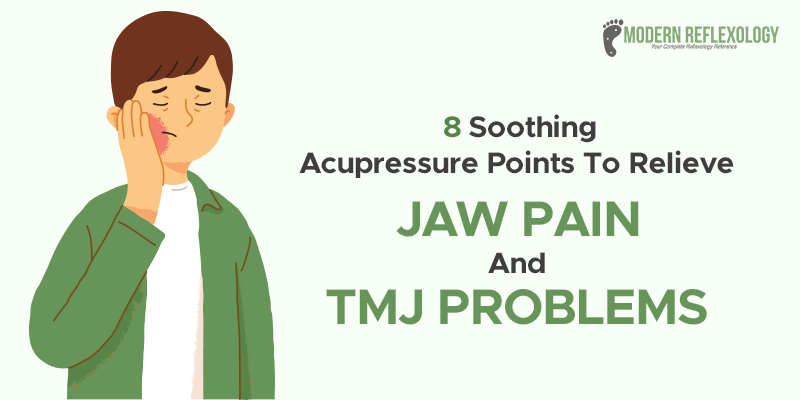
We have a TMJ joint on each side of the face and this joint connects the jaw to the skull and allows mobility which is needed in order to talk, chew and do all other kinds of facial movements. Stress in the jaw joint is one of the common reasons for jaw pain and stiffness. This stress may be caused if a person has a habit of grinding the jaws or clenching their teeth.
Muscle tension can cause a pull on the jaw joints and facial pain. Applying TMJ relief pressure points along with facial muscle exercises is a great way to reduce pain and discomfort in the jaws, and TMJ symptoms like inflammation, spasms, swelling, and pain.
Causes of Jaw Pain and TMD (Temporomandibular Disorders)
Although the exact cause of TMJ is not known, the symptoms of temporomandibular joint dysfunction usually arise from complications in the muscles of the jaw or parts of the temporomandibular joint itself.
Here mentioned are some of the possible causes:-
- Injury to the jaw or the temporomandibular joint or the muscles of the head or neck due to a heavy blow or whiplash.
- Grinding or clenching of teeth exerts pressure on the temporomandibular joint.
- Movement of the soft cushion present between the ball and socket of the joint.
- Arthritis in the joint.
- Tightening of facial and jaw muscles due to stress.
Symptoms of Temporomandibular Joint Disorder
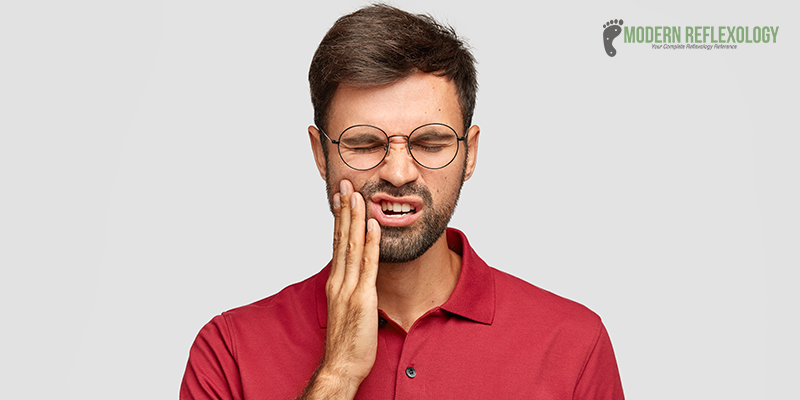
The associated symptoms of TMD are as follows:
- Muscle pain around the jaw TMD
- Clicking or popping noises when you move your mouth or chew
- Difficulty in opening the mouth due to tightness of the jaw
- Pain in the front part of the ear that spreads to the cheeks, ear, and temple
- Recurring headache or migraine
- Buzzing or blocked sensation in the ear
- Disturbed sleep, pain in the neck and back
8 Functional Acupressure Points to Relieve Jaw Pain, Toothache, and Sore Facial Muscles
Here are some effective acupressure points which can help in alleviating stress in the jaws, jaw pain, dental stress and swelling.
1. ST 36
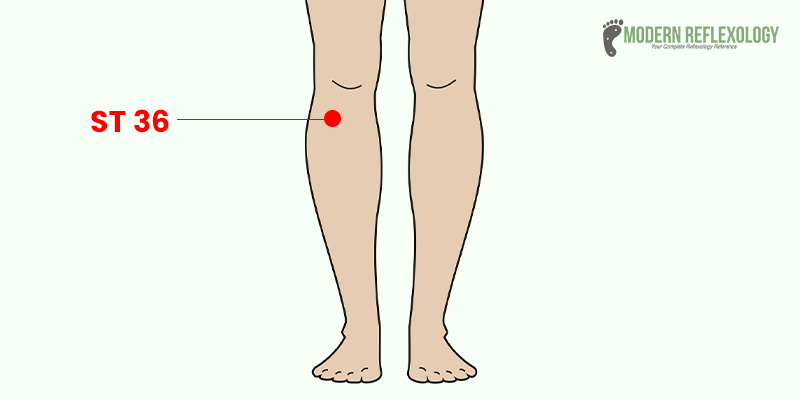
ST36 or Stomach 36 is the most important facial acupressure point that helps in relaxing jaw tension and jaw problems TMJ along with toothaches, lockjaw, and dental neuralgia. This point is also called the Jaw Bone, and it is located between the upper and the lower jaw, on the muscle that bulges when the molars are clenched. You can stimulate this point in two ways. Firstly, place the heel of your hands between the upper and the lower jaws just in front of the ear lobe and apply firm pressure for 1-minute, breathing deeply. Secondly, place your fingertips on the jaw muscle and press firmly for 1 minute while breathing deeply. This point is also useful for treating swelling of the cheeks, facial pain or paralysis, and twitching of facial muscles.
2. TW17
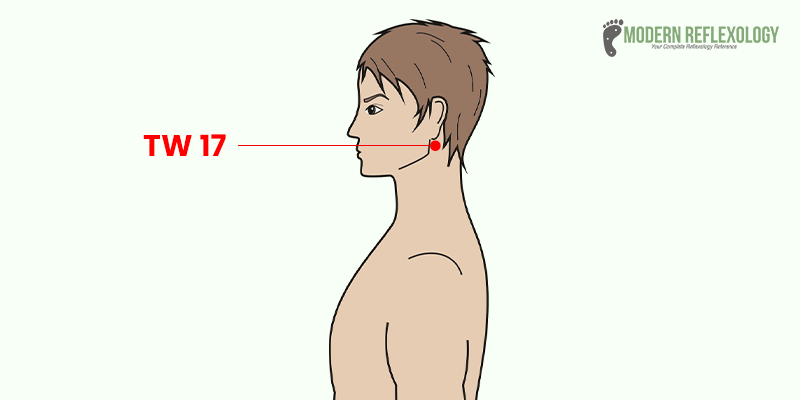
TW17 or Triple Warmer 17 is a functional point to relieve jaw tension which is located in the indentation under the earlobe. This point is also known as the Wind Screen, and it can be stimulated by applying light pressure to the point under both earlobes using your middle finger. Hold the pressure for a minute while taking long and deep breaths. This acupressure point can often be tender, so it is best to use gentle pressure. This point helps to tone facial muscles and is useful to treat ear pain, facial spasms, mumps, jaw pain, lockjaw, toothache, facial paralysis, and itchy ears.
3. SI19
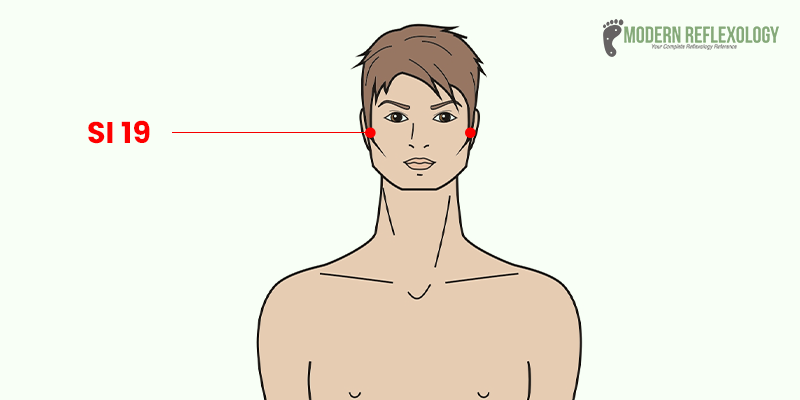
SI19 or Small Intestine 19 is a significant point in acupuncture facelift and is also used in acupressure for treating a wide range of health issues. This point is called the Listening Palace, and it is located right in front of the ear hole, in a depression that widens when the mouth is opened. This point should be stimulated by pressing them on both sides of the face with the middle fingertip for 1 minute while breathing deeply. This point is especially effective for TMJ problems, toothache, ear problems, hearing loss, and epilepsy.
4. TW21
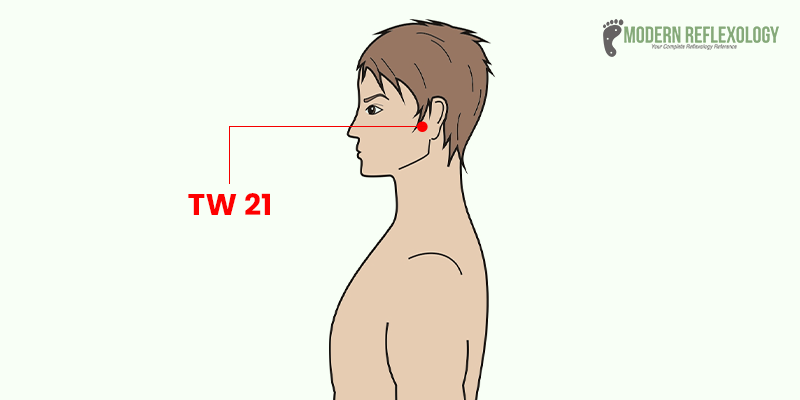
TW21 or Triple Warmer 21 is one of the vital pressure points for jaw pain, and it is also called the Ear Gate. This point is located a one-half inch above point SI19 on both sides of the face. Both SI19 and TW21 can be stimulated at the same time by pressing the points using the middle fingertip on SI19 and the index and ring fingertip on TW21. Concentrate on the points and apply firm pressure for 1 minute on the point while breathing deeply. This point helps to relieve headache, toothache, TMJ problems, joint pain, earache, and pressure inside the ear.
5. GB2
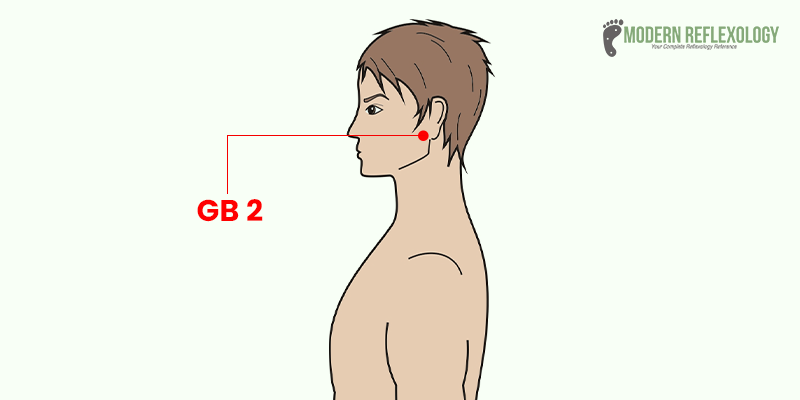
GB2 or Gall Bladder 2 is one of the significant TMJ pressure points, and it is located one-half inch below the SI19 point. This point is especially effective for treating ear problems like tinnitus and deafness along with TMJ disorders, toothache, and facial paralysis. It is best to stimulate this point in union with the other two ear points SI19 and TW21 by applying firm pressure on the points using the fingertips.
6. GB20
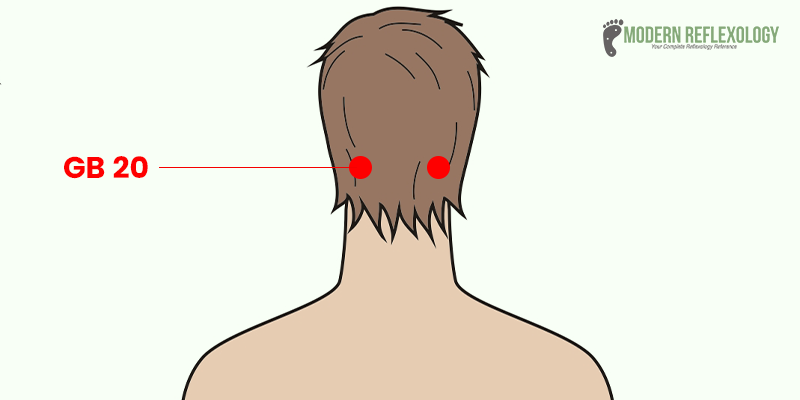
GB20 or Gall Bladder 20 is a functional acupressure point located in the neck, beneath the base of the skull, in the hollows, two or three inches apart. This point is also called the Wind Pool, and it should be stimulated by placing the thumbs on the points and pressing up and underneath your skull for two minutes as you take long and deep breaths. This point is beneficial for relieving jaw pain, neck pain, stiff neck, and headache. In addition, it is also used to treat the common cold, nasal congestion, eye problems, dizziness, and vertigo.
7. GB1
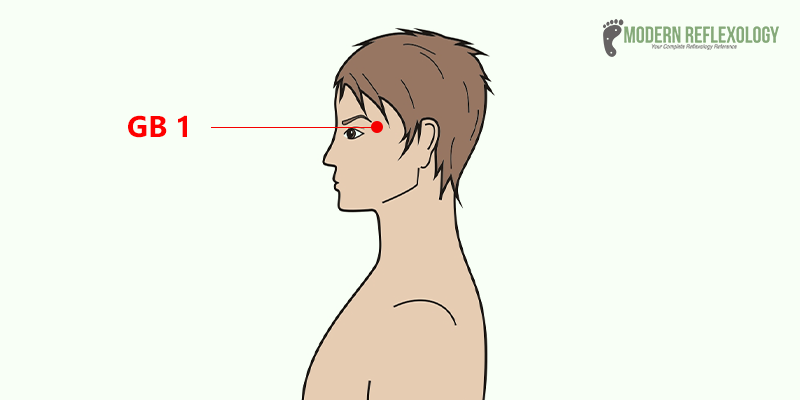
GB1 or Gall Bladder 1 is a vital facial acupressure point that is located in the orbit of the eye at the side of the face. This point is also named the Pupil Bone Hole, and it is the most important acupressure point for all types of eye problems. It can be stimulated by pressing the points on both sides of the face using the middle and ring fingertips. Apply steady pressure for 1 minute and then gradually lighten it. Stimulation of this point can be combined with jaw muscle exercises to cure facial paralysis and Bell’s palsy. It is also used to treat headaches and inflammation.
8. SI18
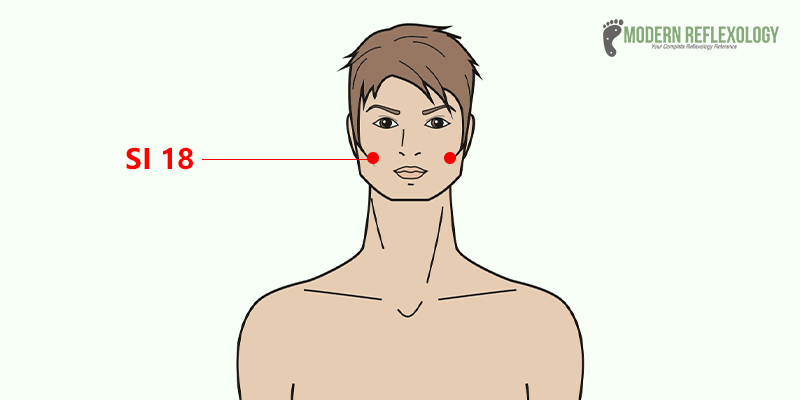
SI18 or Small Intestine 18 is another facial acupressure point also called the Cheekbone Hole. It is located at the lower edge of the cheekbone, straight down from the outer corner of the eye and across the lower edge of the nose. This acupressure point can be stimulated by applying gentle but firm pressure on the points for 1 minute using the tip of the thumb and the middle finger. This acupressure point is useful for correcting twitching of eyelids, facial paralysis, toothache and swelling of the cheek.
Tips to Prepare for Temporomandibular Joint Disorder Massage
Following these few simple yet effective tips before getting on with the acupressure session for jaw pain and tension relief can help in increasing the effectiveness of the session.
- Take deep and slow breaths and keep your eyes closed while you try to relax.
- Grasp the ears in both hands and rotate them gently but firmly.
- Contract all the muscles of the face by scrunching up your mouth, your eyes, and your forehead.
- Squeeze all the muscles as firmly as you can.
- Then open up all the muscles as widely as you can by opening your mouth, widening your eyes, and stretching your lips.
- Place your hands on the sides of your face and cover your face as much as you can and relax for a few minutes.
- Pull the skin of your face upward, downward, forward, and backward and hold each stretch for 30 seconds.
- Rub your hands together and place them on your face for 2 to 3 minutes.
Conclusion:-
If you have been suffering from jaw pain and TMJ, you may apply the effective acupressure points to get relief from the irritating problems of jaw pain, jaw stiffness, and facial muscle pain. You must consult your acupuncture therapist to apply the pressure points in the right way. In case you are undergoing a severe medical problem in the jaw area, it is recommended to take the help of a suitable doctor.
Frequently Asked Questions:-
How does Acupressure work For Tooth Pain?
A 2017 review notes that the World Health Organization (WHO) listed acupuncture and acupressure as effective treatments for dental pain in 2003. The review also highlights that dentists can use these techniques to manage toothache and certain types of jaw pain.
What is TMJ?
TMJ refers to the temporomandibular joint. It’s at the base of the skull, in front of the ear structure. It is connecting the lower jaw (mandible) with the upper jaw (maxilla). Of all other joints in the human body, the TMJ is perhaps the most unique.
What Can Happen to the TMJ?
The TMJ, like any other joint, may be swollen, fractured, or sore, which can produce limited movement of the lower jaw and radiating discomfort and pain to the neck and head area. Unlike other joints such as the knees and hips, arthritis of the TMJ is very rare, and hard to treat with only anti-inflammatory drugs.
How Can You Treat Pregnancy Jaw Pain?
Taking care of jaw pain should begin with non-surgical therapies first. Surgery should be the last resort. Some of the common remedies that may help relieve you from an aching jaw during pregnancy include Cold compress, simple exercises, and massage, etc.

Comments are closed